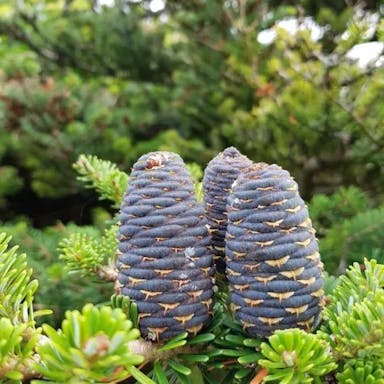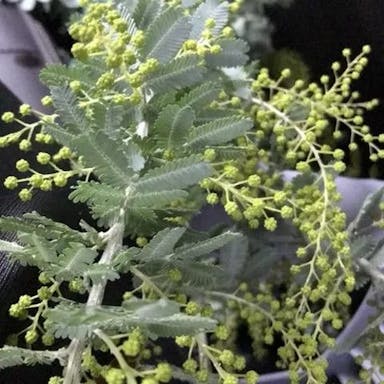Grandidier's baobab, scientifically known as Adansonia grandidieri, is a striking tree native to Madagascar. It is massive trunk, which can reach up to 30 meters in height and 3 meters in diameter. The trunk is bottle-shaped and swollen, storing water to endure drought conditions. While it thrives in hot, dry climates, it can challenging to grow outside of its native habitat due to its environmental requirements. The tree's features and limited distribution make it a ornamental plant in botanical gardens worldwide. The tree produces large white flowers that bloom at night, emitting a sweet scent to attract pollinators like bats. The flowers develop into egg-shaped fruits filled with seeds surrounded by a powdery pulp. Adansonia grandidieri is known for its appearance and cultural significance in Madagascar, where it is considered a symbol of life and positivity.
Grandidier's baobab
- Scientific name
- Adansonia grandidieri
Basic Information
- Malvaceae Family Adansonia Genus Grandidier's baobab Species
- Malvaceae > Adansonia > Adansonia grandidieri
- 83%
- The Completeness of This Encyclopedia
Please help us complete the encyclopedia, Terrarium is a encyclopedia service to be completed with everyone in the world. Currently, this page is 83% complete. For more information on how to contribute, please click here.
- Tree
- Height
- 2500cm ~ 3000cm
- Flower Color
- Leaf Color
- Anthesis
- summer
- Sunlight Exposure
Full Sun Long hours of sunlight from morning to afternoon Partial Shade A location in the shade of a tree or where either the morning or afternoon is shaded Full Shade A place where there is no direct sunlight
- Full Sun
- Hardiness Zones
This is an indicator to know to which zone each plant can winter. Knowing the zone of each plant gives you an idea of the cold temperature resistance when grown in the ground without a roof. 2: -42.7 to -40.0 3: -39.9 to -34.4 4: -34.3 to -28.9 5: -28.8 to -23.3 6: -23.2 to -17.8 7: -17.7 to -12.2 8: -12.1 to -6.7 9: -6.6 to -1.1 10: -1.0 to 4.4 11: 4.5 to 10.0
- 10
- Cold resistance
- Poor
- Heat resistance
- Excellent
- Habitat of origin
- Madagascar
- Growth Rate
- Slow
What is Grandidier's baobab (Adansonia grandidieri)?
What is Grandidier's baobab (Adansonia grandidieri)
Flower meaning
The floral language regularly used in the United States for Grandidier's baobab is: - Strength - Stability - Determination One precise illustration is
Calendar of Grandidier's baobab (Adansonia grandidieri)
Calendar
Grandidier's baobab typically flowers in the USA during summer, June to August. Flowers peak in July. Blooming once annually, lasting about 2-4 weeks. To extend flowering, guarantee adequate sunlight, water, well-draining earth. Pruning dead flowers also promotes continuous flowering.
How to grow Grandidier's baobab (Adansonia grandidieri)
Watering
For Grandidier's baobab, watering frequency adjustment is required by season. During spring plus summer growing period, hydration occurs every 7-10 days. Autumn reduces hydration to every 14-21 days. Winter waters sparingly every 21-30 days in order to prevent root rot. Well-draining soil assurance is needed to avoid waterlogged conditions. Soil humidity level monitoring by finger insertion 1-2 inches into the soil; water when top layer feels dry. Watering amounts adjustment based on the plant's size and environmental conditions to maintain optimal soil moisture levels. After dropping seed covers with plastic sheet for extra moisture retention.
Soil and Fertilizer
Grandidier's baobab thrives in well-drained sandy soils with a pH range of 6.0 to 7.5. Use a balanced slow-release fertilizer in early spring and late summer around the area, avoiding direct contact. Monitor the plant's growth and adjust accordingly. Check the soil quality regularly to ensure proper drainage and aeration. Avoid using high-nitrogen fertilizers, as they can promote excessive foliage growth. The tree requires a sunny location, and is sensitive to overwatering.
Sunlight and Place
Grandidier's baobab blooms in full sun. It needs at least 6 hours of direct sunlight daily. It can withstand high heat but is sensitive to cold below 50°F. It can stand heat up to 100°F, so it fits hot weathers. In winter, protect it from frost and keep it warm. Put it where sun shines and water drains well to help it grow. Grandidier's baobab gains from bright sun. This aids photosynthesis and general health. It flourishes with ample sunlight during the day.
Advanced Information of Grandidier's baobab (Adansonia grandidieri)
Pruning
Grandidier's baobab benefits from pruning to maintain its shape, remove dead or damaged branches, and promote new growth. It is recommended to appropriately cut off the branches using clean tools during the dormant period, and then apply fertilizer. Monitoring the health of the plant is necessary.
Planting and Harvest
Bottle tree prospers primarily when contained owing to its lethargic maturation pace and ability to adjust to receptacle conditions. To contain this shrub, opt for a deposit that drains adequately and a holder with discharge perforations to avert waterlogging. When embedding, guarantee the roots are extended consistently in the container and conceal them with soil, abandoning some space at the top for watering. For transplanting, do as such occasionally a step bigger vessel to oblige development. Shower the green occasionally and put it in a bright detect within. Evade overwatering to anticipate root spoil and accommodate infrequent treatment during the developing season.
Propagation
Grandidier's baobab can be propagated through seeds, cuttings, and grafting. Seeds should be sown in well-draining soil, kept moist, and placed in a warm environment. To ensure successful propagation, it is recommended to use a combination of methods to increase the chances of success. Harvest seeds when the fruit is ripe, and cuttings should be taken during the plant's active growth period. Cuttings should be taken from healthy branches, treated with rooting hormone, and planted in a mix of sand and peat moss. Leaf cuttings can also be used by taking a healthy leaf, allowing it to callus, and planting it in a well-draining potting medium.
Pests and Diseases
Overall, proper care vigilance essential preventing managing pests diseases affect Grandidier's baobab. Grandidier's baobab susceptible various pests diseases including fungal infections like powdery mildew leaf spot diseases caused bacteria. Diseases lead leaf discoloration, wilting, ultimately, death plant. Preventative measures ensuring proper air circulation around plant, avoiding overhead watering, promptly removing disposing infected plant parts. Additionally, maintaining proper soil drainage avoiding waterlogging help prevent fungal infections. Pests such aphids, mealybugs, scale insects also infest Grandidier's baobab, causing damage leaves stems. Regularly inspecting plant signs pest infestation using insecticidal soaps neem oil help control pests.
Habitat of Grandidier's baobab (Adansonia grandidieri)
Habitat
Toxicity of Grandidier's baobab (Adansonia grandidieri)
Health Benefits
- edible
- edible
- Toxic
- No toxicity
NO DATA
Toxic for dogs and cats
NO DATA
Q&A of Grandidier's baobab (Adansonia grandidieri)
- choice
Grandidier's baobab has two primary varieties: A. grandidieri and A. za. Seedlings should appear in good shape without indications of illness or harm. Pick fresh, plump seeds without mold. The A. grandidieri seedlings ought to have a thick trunk and roots. The A. za seedlings may have a more slender trunk and little leaves. Think about the development rate and last size of every variety to coordinate space. Check suppliers focusing on baobab species for quality certification.
- What is Grandidier's baobab tree?
Grandidier's baobab, scientifically known as Adansonia grandidieri, is a tree species native to Madagascar. It is the most famous of Madagascar's six species of baobabs. This tree is renowned for its unusual shape, resembling a bottle or a candelabra. It grows up to 30 meters high and its trunk can reach a diameter of 3 meters. Grandidier's baobab is a deciduous tree, meaning it sheds its leaves annually. It is also known for its long-lived nature, with some specimens estimated to be over 800 years old. Unfortunately, this unique tree is now considered an endangered species due to deforestation and agricultural practices.
- What are the features of Grandidier's baobab?
Grandidier's baobab, scientifically known as Adansonia grandidieri, is characterized by its massive cylindrical trunk, which can reach up to 3 meters in diameter. It is the tallest species among the baobabs, with heights reaching up to 30 meters. The tree is deciduous, shedding its leaves during the dry season. It has long, narrow leaves grouped in clusters at the ends of the branches. Its flowers, which bloom at night, are large and white, while its fruit is a large, dry, kidney-shaped capsule. The tree is endemic to Madagascar and is critically endangered due to habitat loss and overharvesting.








